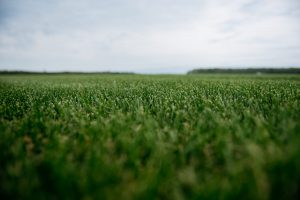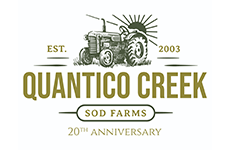
It’s easy to think that your lawn is made up of one type of grass.
It’s easy to think that your lawn is made up of one type of grass. But the truth isn’t as neat and tidy. Many lawns are comprised of different types of grass. Plus, the grass that thrives in your culdesac is probably different than the one on the golf course or down at the park. So the question remains, can you recognize the grass on your lawn just by looking at it?
Warm Season Grasses
Since summer is almost here, meteorologically speaking, it stands to reason that warm season grasses are a good bet. But you have pretty much the same lawn year round, except when the frosts hit in the fall and then the yard freezes over during the winter. Spring is behind, and summer is ahead, so let’s take a look at what grass types you can expect.
Bermuda Grass
Don’t worry, this is one triangle you won’t get lost in; mowing is easy because it can be cut short and still thrive. Aboveground, it spreads by way of stolons, and below ground, it spreads via rhizomes, which both help it form into a dense turf that is quite resilient. However, it is a high-maintenance grass, since it needs plenty of fertilizing, watering, and mowing.
Centipede Grass
Centipede grass also uses stolons to spread out on your lawn. You don’t have to mow it that often, and if you’re into gardening and landscaping, particularly around sidewalks and walkways, then you’ll find that this grass is surprisingly easy to work with; just make sure to keep it well-watered. Unlike other warm season grasses, it doesn’t require much fertilizer.
Dichondra
Dichondra is usually found out west, which means it might not be as popular on the east coast. It behaves like grass when it is mowed and is pleasing enough to the eye that it can help boost your home’s curb appeal. However, you will also need to vigilant about taking care of it, since it demands fertilizer and is often vulnerable to the ravages of insects and lawn diseases.
Kentucky Bluegrass/Ryegrass
Even with all of these options before you, maybe your lawn is full of something a bit closer to home. In this case, it could include Kentucky bluegrass and ryegrass, two types of closely-related cool season grasses. Kentucky bluegrass is one of the house specialties here at Quantico Creek Sod Farm, so if you ever need more, then you know who to call!
Have More Questions? Stay in Touch!
Order early, and order often to ensure the best service possible. Contact us through our online page. Find us at 27616 Little Lane, Salisbury, Maryland 21801. Our phone number is 410-726-6103, and our fax number is 410-742-6550. Speak to Jason Anderson for Turf Grass Sales. Reach him by email at jason@quanticocreeksod.com. Finally, follow us on social media on Facebook, LinkedIn, and our blog!
